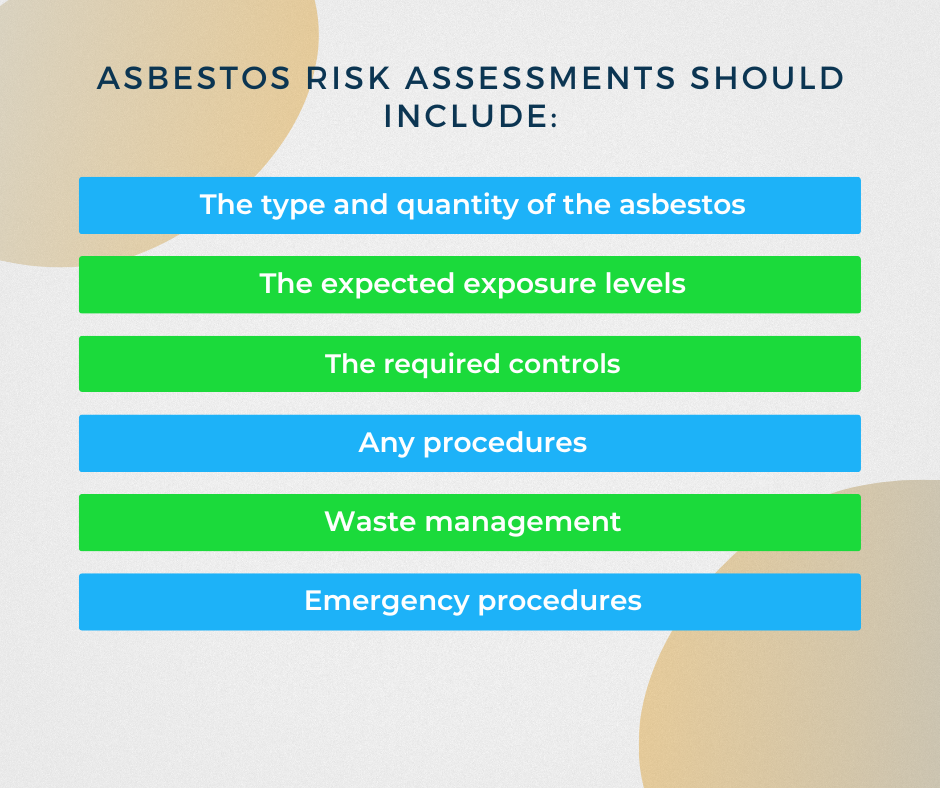Workplace Asbestos
In spite of its banned status, asbestos poses an ongoing and pervasive risk for individuals engaged in activities within structures constructed prior to the year 2000. These encompass a wide range of settings, including factories, residences, hospitals, schools, and more. Ensuring the safety of workers who might potentially disturb asbestos is imperative, and this is accomplished through comprehensive risk assessments, provision of information, instruction, and specialized training.
Actions for Duty Holders

For those overseeing tasks in buildings erected or renovated before 2000, a set of essential actions must be taken:
- Identify Asbestos Presence: Designated as the ‘duty holder,’ those primarily responsible for a building or its maintenance bear a legal obligation to manage asbestos risks. This involves conducting a thorough risk assessment to ascertain the presence of asbestos or the likelihood thereof. Accurate records must also be maintained.
- Access Asbestos Information: An asbestos register might be accessible, listing all asbestos-containing materials (ACMs). Alternatively, inspections might be necessary, presuming materials contain asbestos unless compelling evidence suggests otherwise. Common materials housing asbestos include ceiling tiles, cement products, bitumen roofing materials, vinyl and thermoplastic floor tiles, and molded lagging such as thermal insulation.
- Plan Work to Avoid Disturbance: If asbestos is present, work plans should be devised to prevent any disruption to these materials. Workers must receive suitable training, covering aspects like asbestos location, necessary personal protective equipment (PPE), and proper decontamination procedures. Detailed method sheets or safe working procedures should be developed to ensure compliance with the plan, as guided by the asbestos risk assessment.
Asbestos Risk Assessment
Performing an asbestos risk assessment entails:

- Identifying the type and quantity of asbestos, e.g., serpentine (chrysotile – white).
- Estimating potential exposure levels.
- Outlining required controls such as respiratory protective equipment (RPE), enclosures, and proper ventilation.
- Establishing procedures including decontamination of equipment and clothing.
- Addressing waste management, possibly involving licensed waste contractors.
- Outlining emergency measures, like lockdown and post-release ventilation periods.
Asbestos Training

Different types of asbestos training are necessary based on the specific activities and disturbance levels anticipated:
- Asbestos Awareness Training: Essential in all cases, this training imparts knowledge to operatives and supervisors about recognizing and avoiding work that may involve asbestos. Participants understand the various types of asbestos, its common applications, and its health implications, including increased lung cancer risk for smokers.
- Non-Licensable Work with Asbestos (NNLW) Training: Required for activities that will knowingly disrupt ACMs. This training encompasses making informed assessments of asbestos exposure risks, safe work practices, and protocols for emergencies and waste handling.
- Licensable Work with Asbestos Training: Applicable for tasks such as complete removal of damaged asbestos-containing materials or handling substantial amounts of ACM dust. This intensive training equips learners with advanced knowledge, including controlled stripping techniques, air purification methods, and meticulous clearance procedures.
By adhering to these guidelines and embracing thorough training, individuals working within buildings predating 2000 can effectively mitigate the risks associated with asbestos exposure, ensuring the safety and wellbeing of all involved.





